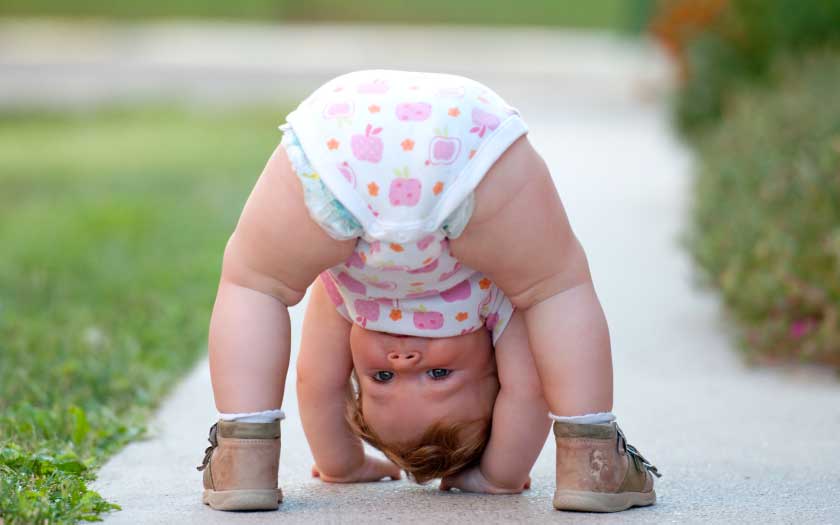Bowed legs (genu varum) is a condition in which a person’s knees stay wide apart or gapped when they stand with their feet and ankles together. Infants generally appear to have bowed legs and this is normal for it is the result of being in a curled-up position in the womb during development.
However, as they grow and begin to walk, the condition usually resolves spontaneously.
The appearance of bowled legs usually becomes more apparent as a child starts to stand and walk, but typically the legs will gradually straighten out. By age three, most kids no longer appear bowlegged. By the time a child goes to school, his or her legs would have reached the shape they’ll retain for life.
How to tell if your child is bowlegged
A child is not considered bowlegged unless all three of the following conditions are observed.
- Knees do not touch when standing with feet together (ankles touching)
- Bowing of legs is same on both side of the body (symmetrical)
- Bowed legs continue beyond age three
Bowlegs caused by illness
Bowlegs may be caused by certain illnesses too, such as:
- Abnormal bone development
- Blount’s disease
- Fractures that do not heal correctly
- Lead or fluoride poisoning
- Rickets, which is caused by a lack of vitamin D
Blount’s disease
Blount’s disease is a condition that can occur in toddlers, as well as in adolescents. It results from an abnormality of the growth plate in the upper part of the shinbone (tibia). Growth plates are located at the ends of a child’s long bones. They help determine the length and shape of the adult bone.
In a child under the age of two years, it may be impossible to distinguish infantile Blount’s disease from physiologic genu varum. By the age of three years however, the bowing will worsen and an obvious problem can often be seen in an x-ray.
Rickets
Rickets is a bone disease in children that causes bowed legs and other bone deformities. Children with rickets do not get enough calcium, phosphorus, or Vitamin D — all of which are important for healthy, growing bones.
Nutritional rickets is unusual in developed countries because many foods, including milk products, are fortified with Vitamin D. Rickets can also be caused by a genetic abnormality that does not allow Vitamin D to be absorbed correctly. This form of rickets may be inherited.
Should I talk to the doc?
At any age, it would be a good idea to mention it to your doctor if you think your child’s bow-legged condition is extreme, affecting only one side, or getting worse instead of better. In any case, if your child has reached the third birthday and still appears to be bowlegged, it’s worth checking with your doctor.
The doctor will probably examine your child and note some medical history. A blood test may be done to rule out a vitamin D deficiency and X-rays may be taken to rule out Blount’s disease. If there is a vitamin deficiency, the doctor will prescribe a supplement. Your child may also be referred to a pediatric orthopedist for further evaluation or treatment.
Can bowlegs be corrected?
Treatment is rarely needed, but very occasionally surgery is used to correct a severe curve. Most experts today don’t recommend braces or corrective shoes because they can cause problems with physical development.


